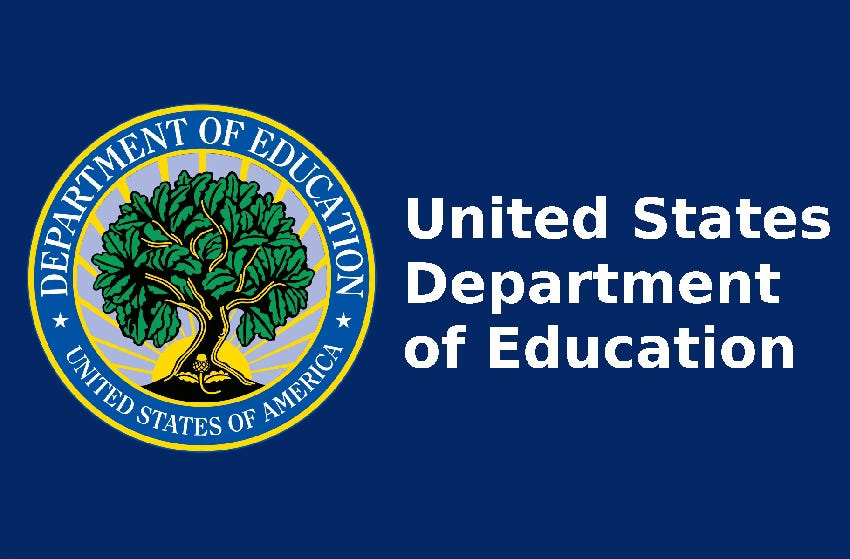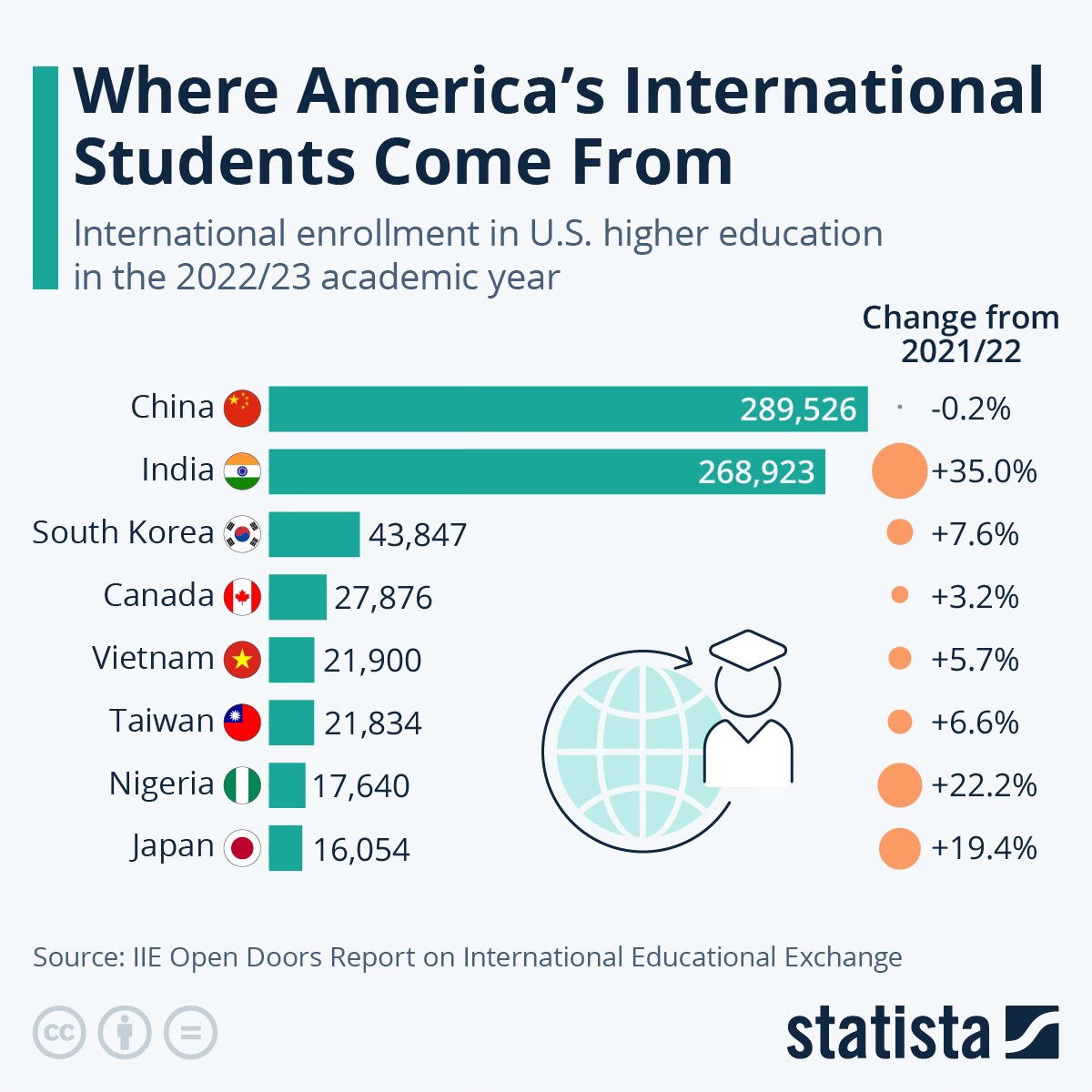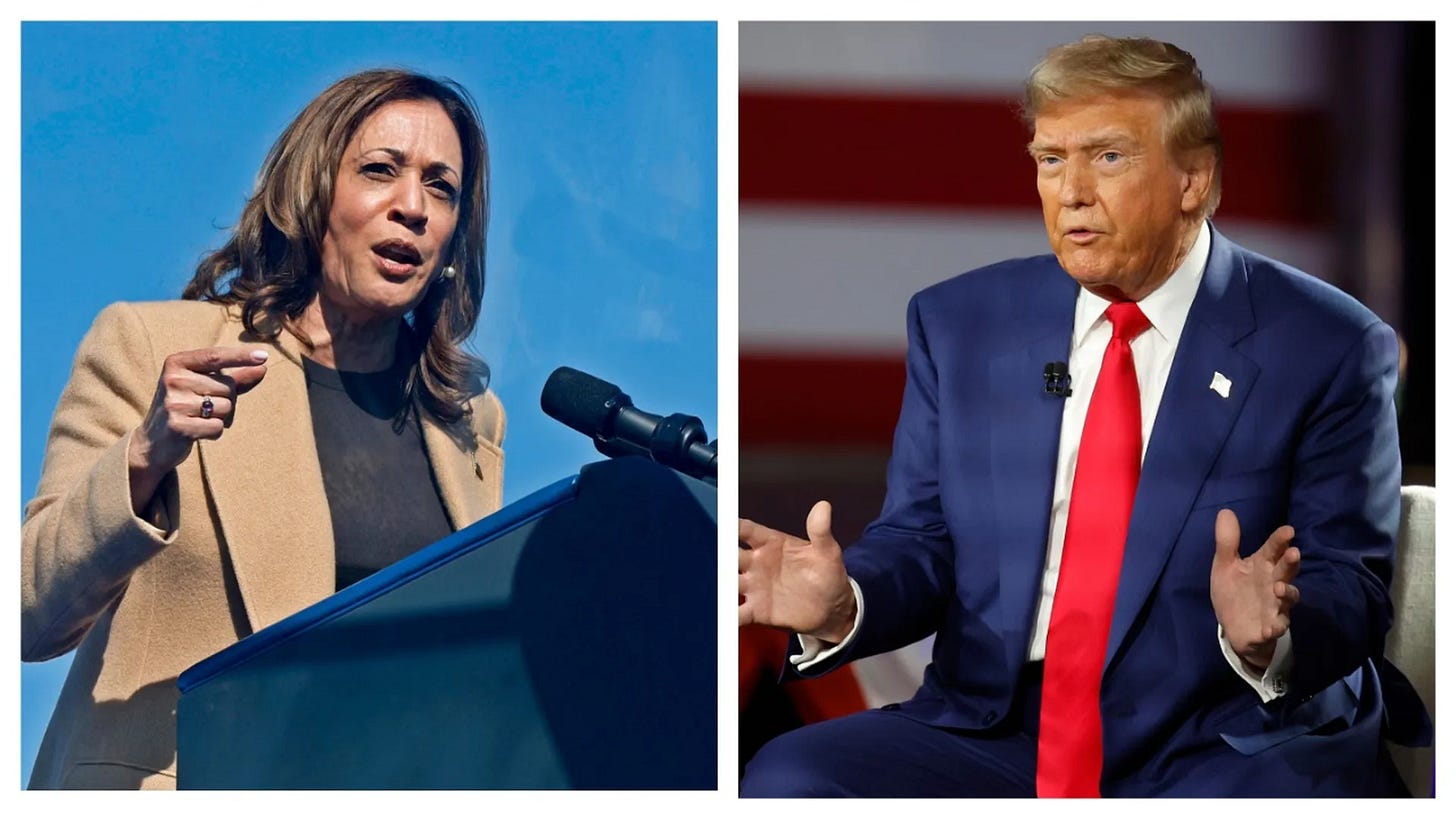Where do the U.S. Presidential candidates stand on higher education? (Part 2)
The outcome of the 2024 U.S. Election promises to have huge implications for Canadian higher education. Here's where the candidates stand on key issues.
Yesterday, I recapped where the U.S. Presidential candidates stand on post-secondary accreditation, campus protests, and affordability.
But there are some critical areas that I’ll explore below. Let’s get into it.
First up is one of the most crucial elements to America’s higher education system, in terms of funding, direction, and regulation:
The U.S. Department of Education.
Education Department funding
A) Kamala Harris
While no specific plans are mentioned, it appears that Harris means to continue a “more of the same” approach to the U.S. Department of Education. Harris’ campaign website highlights the administration’s record on funding higher education, recalling increasing the Pell Grant award maximums (increased by 14% to the current $7,395).
B) Donald Trump
In sharp contrast, Trump has stated in recent election rallies that his administration would eliminate the Department of Education, and instead disburse its duties to state governments. His proposal is in line with the national platform of the GOP, which calls for the dismantling of the federal department and sending “it back to the States, where it belongs”.
International Students
A) Kamala Harris
Harris has previously criticised Trump’s executive order to ban individuals from Muslim-majority countries in a public statement, calling it “broad discrimination” while praising contributions of international students.
Years later, the Biden-Harris administration reversed Trump’s travel ban, recommitting the U.S. department and State Department to boosting international student education more broadly.
B) Donald Trump
During his time in office, Trump’s administration issued several policies to restrict international student enrolments in the U.S. This includes the 2017 executive order to ban entry for individuals from Muslim-majority countries — which led to the suspension of visas for many international students living in the U.S. This stance has been echoed by Trump during his 2024 campaign.
In addition, the Trump administration tightened restrictions on visas for skilled workers and sought to deport international students enrolled in online-only programs during COVID-19 (the latter which was rapidly reversed due to backlash).
One study by Song and Li (2022) found that international student enrolments dropped 12% during Trump’s first 3 years in office.
However, in a strange juxtaposition, Trump has since indicated on a podcast recently that international students graduating from American institutions should receive green cards to remain in the States. Later, his campaign indicated that they would issue this policy after “the most aggressive vetting process in U.S. history”.
Student Financial Aid
A) Kamala Harris
As part of the Biden-Harris administration, Harris has supported efforts to forgive vast amounts of student loan debt — $170 billion for 5 million students — which she has highlighted during her 2024 campaign. She has also pushed for reform within the student loan system, including protecting the Saving on a Valuable Education (SAVE) plan — which provides loan forgiveness for select borrowers after 10 years of repayment.
B) Donald Trump
Trump has repeatedly denounced broad student loan debt relief, praising the U.S. Supreme Court’s decision to eliminate U.S. President Biden’s forgiveness plan. His running mate, J.D. Vance, has echoed these sentiments on the campaign trail. Interestingly, in May, Vance co-introduced legislation which would have enabled student loan forgiveness in the event of a borrower’s child becoming “totally and permanently disabled”.

Title IX
For context, earlier in April, U.S. Department of Education announced a new rule on Title IX, which is a wide-reaching law that bans federally-funded post-secondary institutions and schools from sex-based discrimination — effectively extending the civil rights protections for LGBTQI+ students — however federal judges have previously ruled to temporarily block the Title IX rule from implementation in 26 states.
A) Kamala Harris
Following the Trump administration’s policy announcements to limit civil protections for students in gender identity and sexual orientation cases, the Biden-Harris administration immediately reversed course on these policies. It took a step further by announcing the Title IX rule — effectively extending civil rights protections to LGBTQI+ students in higher education.
The Biden-Harris administration has continued to back its rule on Title IX despite the threat of ongoing legal challenges.
B) Donald Trump
The Trump administration previously took a hardline stance towards sexual orientation and gender identity cases in higher education, including introducing policies to require live hearings in sexual misconduct cases and limiting the volume of sexual violence complaints that institutions must investigate.
Shortly after the Biden-Harris administration’s Title IX rule was announced, Trump promised to eliminate its protections, telling a radio show “We’re going to end it on day one”. The official U.S. Republican Party’s platform proposes to “end left-wing gender insanity” and “reverse Biden’s radical rewrite”.
Next Steps
Well that’s it for the full platform analysis. Next up will be a post on my analysis of the policy implications for Canadian higher education.
Keep your eyes open for that final analysis to hit your inbox — come Monday. Have a great rest of your weekend folks.








